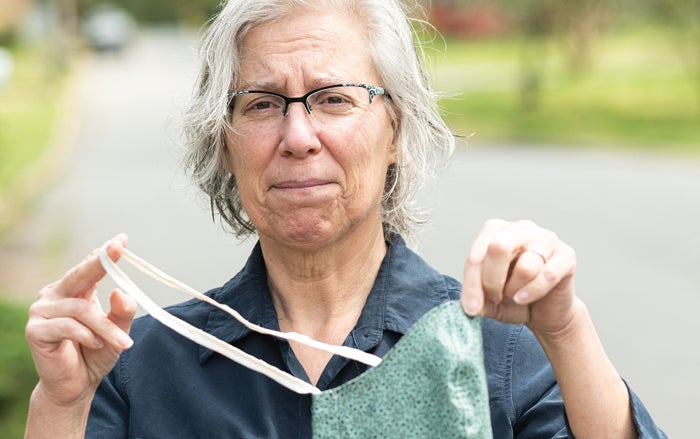Local seamstress creates facial masks for neighbors during COVID-19 outbreak
Published 12:02 am Thursday, April 2, 2020

- Josh Bergeron / Salisbury Post - Liese Sadler is one of many people across Rowan County and Salisbury making homemade masks that aim to slow the spread of COVID-19. She estimates that she makes 10 to 12 masks per day, and she hangs them on a line outside of her house.
By Shavonne Potts
shavonne.potts@salisburypost.com
SALISBURY — Liese Sadler is a self-professed news junkie who has kept up with COVID-19 developments, but one article about face masks caught her attention.
The article asked the question: Should everyone wear facial masks during this pandemic? That planted a seed for Sadler, who has sewn all of her life. Like many other people and businesses, the COVID-19 outbreak has inspired her to immediately get to work creating masks.
“I just got started,” she said.
Usually, Sadler, who’s been sewing since her mother taught her as a child, can be found sewing custom creations for clients or framing textiles for Fine Frame Gallery in downtown Salisbury. But she Sadler has free time lately since she essentially works when she has a project. So, she decided to make free masks for anyone who wanted them. She let people in her Meadowbrook neighborhood know via the NextDoor app and has received a tremendous response.
She starts sewing around 8 a.m. and estimates that she sews a dozen or more masks per day.
“I cut out about four. Then, I go sew them. Then I make the tapes and assemble them,” Sadler said.
Sadler, who lives in Salisbury’s Meadowbrook neighborhood, tied the masks onto a line attached to her mailbox and another post. She also affixed a note with some instructions and the fact that the masks are not medical-grade. She’s asked that each person who wants to take one.
“Sometimes people wave and sometimes they leave notes in my mailbox,” Sadler said.
A few people have left money, but Sadler said she hasn’t asked for donations. Any donations she’s received have gone back into the masks, buying more supplies. She’s just appreciative of the kind notes, cards and waves she’s gotten already.
Sadler began making a pleated pattern that some hospitals around the country are advocating, but she’s since opted to make rounded masks with a pocket for extra “padding,” she said. Some people have placed material in the pocket as a buffer.
Sadler said she’s aware the masks may not do much to protect the wearer against the rapidly spreading virus, but it could help flatten the curve and protect others. It’s thought that wearing a mask could potentially lower the risk that the wearer, if he or she were infected, would transmit the virus to other people.
Since starting on her mask-making journey, Salder has received some interest from health care companies who are seeking donations. She’s heard others in the area have also created facial masks and said she hopes even more people who sew join in the effort.

